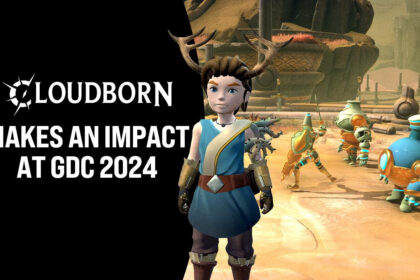With numerous innovations continuing to permeate the blockchain gaming sector, one title that has carved a serious niche for itself in recent years is My Neighbor Alice.
Developed by Antler Interactive, this multiplayer builder game draws inspiration from popular titles like Animal Crossing and Minecraft, while seamlessly integrating the principles of blockchain tech into its digital framework — thus offering players actual ownership of their in-game assets.
Set in the picturesque Lummelunda Archipelago, My Neighbor Alice invites players to explore, create, and interact in a vibrant virtual world where creativity and community take center stage. At its core, the game offers a social simulation that revolves around the ownership and development of virtual islands.
Players begin their journey by purchasing a plot of land, represented as a unique NFT (Non-Fungible Token) on the blockchain and owned by the player. Once established on their island, players can participate in various activities, from farming and fishing to crafting and decorating.
The intuitive building system allows for the creation of everything from simple gardens to elaborate landscapes, catering to both casual players and dedicated designers. As players progress, they can gather resources, complete quests, and interact with other players, forming a rich tapestry of experiences that keeps the gameplay fresh and engaging.
One of the game’s standout features is its social aspect, i.e., players can visit each other’s islands, collaborate on community projects, and even participate in events like the Alice Summer Sports competitions. Such an emphasis on interpersonal interactions helps foster a sense of community that extends beyond the game, creating a truly immersive and socially rewarding experience.
The miracles of blockchain integration
My Neighbor Alice’s economy is built around its native digital currency ‘ALICE,’ an ERC-20 utility token that players can use to purchase in-game assets, participate in governance decisions, stake for rewards, and even earn through various play-to-earn mechanisms.
Nearly every in-game item, from avatar accessories to crafted objects, can be minted as an NFT and traded/sold on both in-game and external marketplaces. The game’s commitment to a fully decentralized model is set to be realized with the launch of its mainnet, which promises enhanced gameplay mechanics and expanded user-generated content capabilities.
Moreover, the Community Council, a decentralized autonomous organization (DAO), will allow token holders to propose and vote on changes to the game, from new features to economic adjustments — fostering a sense of ownership and investment in the game’s success but also ensures that the game remains responsive to the community’s needs and desires.
For those interested in the financial aspects of the project, it’s worth noting that the ALICE token has been the receiving end of a lot of positive market activity in recent months. For instance, during August, the asset reached a relative high of $2.34 while remaining in the green over the past year.
$ALICE performance over the past 12 months (source: Coingecko)
Accessibility and sustainability
From the outside looking in, one of My Neighbor Alice’s greatest strengths is that it does not require users to possess any knowledge of the blockchain or cryptocurrencies — making it an excellent gateway for anyone curious about this space. With over 1.5 million transactions recorded during its Alpha testing, the game has already demonstrated its appeal to a broad gaming audience.
Another aspect of the project worth noting is that it has been built atop the Chromia blockchain, which uses a PBFT (Practical Byzantine Fault Tolerance) consensus system and is incredibly energy-efficient, especially compared to traditional proof-of-work (PoW) systems.
Beyond its entertainment value, My Neighbor Alice also offers surprising educational benefits, introducing players to various financial literacy concepts such as supply and demand, asset value determination, and investment strategies. As players engage with the in-game marketplace and make decisions regarding resource allocation, they can develop real-world skills.
Moreover, the game’s building and design elements encourage creativity and spatial reasoning. Players learn to plan and execute complex projects, manage resources efficiently, and solve problems creatively. These skills, developed in a fun and engaging environment, can have practical applications outside the game world.
That’s a wrap
My Neighbor Alice represents a new frontier in blockchain gaming, combining the charm and accessibility of traditional social simulation games with the innovative potential of blockchain-based decentralization. Thus, as the game continues to grow and evolve, it stands poised to play a significant role in bringing blockchain gaming into the mainstream, challenging traditional gaming models, and redefining the relationship between players and their virtual avatars.









